In Galicia, carnival is called entroido or antroido, and these festivals are lived with passion, especially in the Province of Ourense. After surviving political censorship, ecclesiastical condemnation and cruelties of the time, today it is possible to fully enjoy the colourful Galician geography which is popular for it's green beauty.
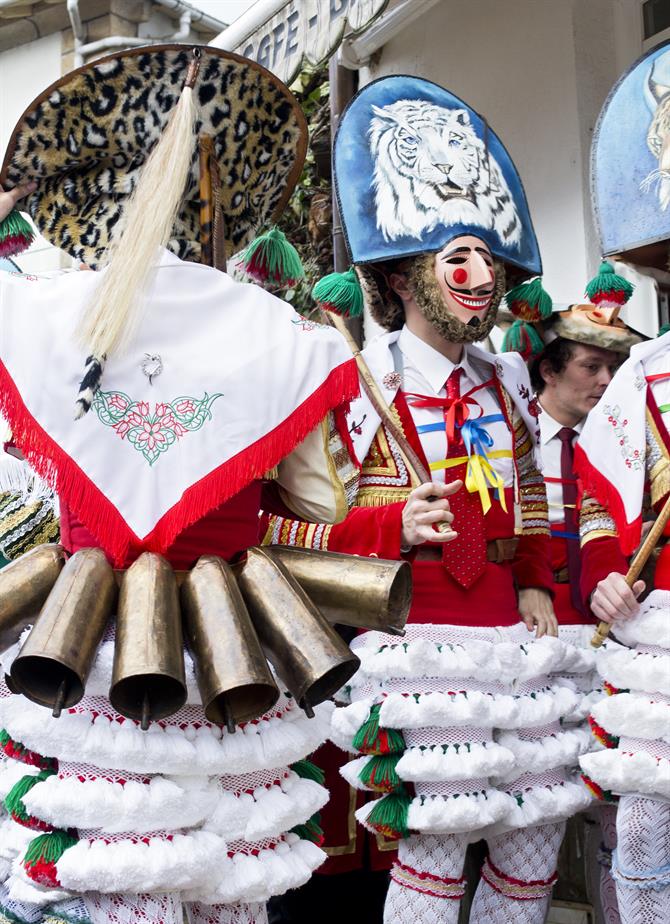
Although there are dozens of villages with unique carnivals, eight are officially declared to be of touristic interest. Each unleashes feelings of total joy and boasts colourful masked characters.
Galician carnivals of touristic interest are the following:
Laza - known for its famous peliqueiros;
Xinzo de Limia - where you will meet las pantallas;
Verin - the land of cigarrones;
Viana do Bolo - with the strange boteiros;
Coppers - where elegance reigns, all thanks to the madams and gallants;
Manzaneda - a scene of masquerade;
Maceda - home to felos - the cousins of the cigarrones and peliqueiros;
Finally, there are also the characters of the quintessential Carnival de los Xenerais de Ulla, generales and correos, held in municipalities of the Ulla river basin.
These carnivals are the perfect opportunity to organise a holiday to the lesser known parts of rural Galicia. Here you can enjoy the rich culture and incredible natural landscapes that this part of Spain has to offer.
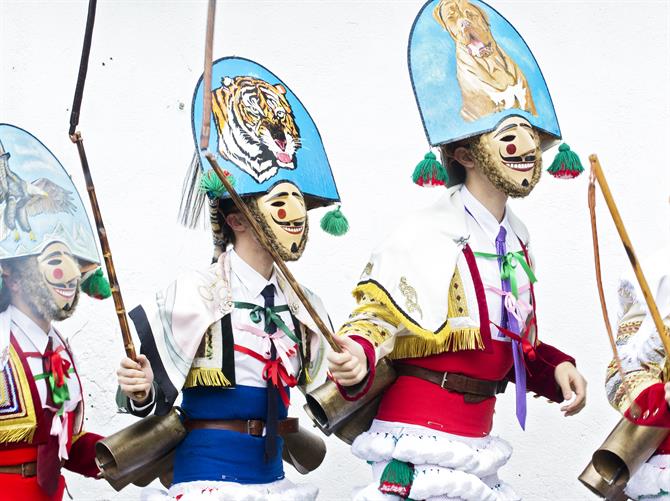
The magical triangle of Ourense
It can't be a coincidence that of the eight most famous carnivals in Galicia, six are in Ourense. This fact stresses the particular aesthetic fervour of the triangle formed by the municipalities of Xinzo de Limia, Laza and Verin. You'll see that this fascinating area begins to prepare for the carnival period just after the first weekend following the Christmas holidays.
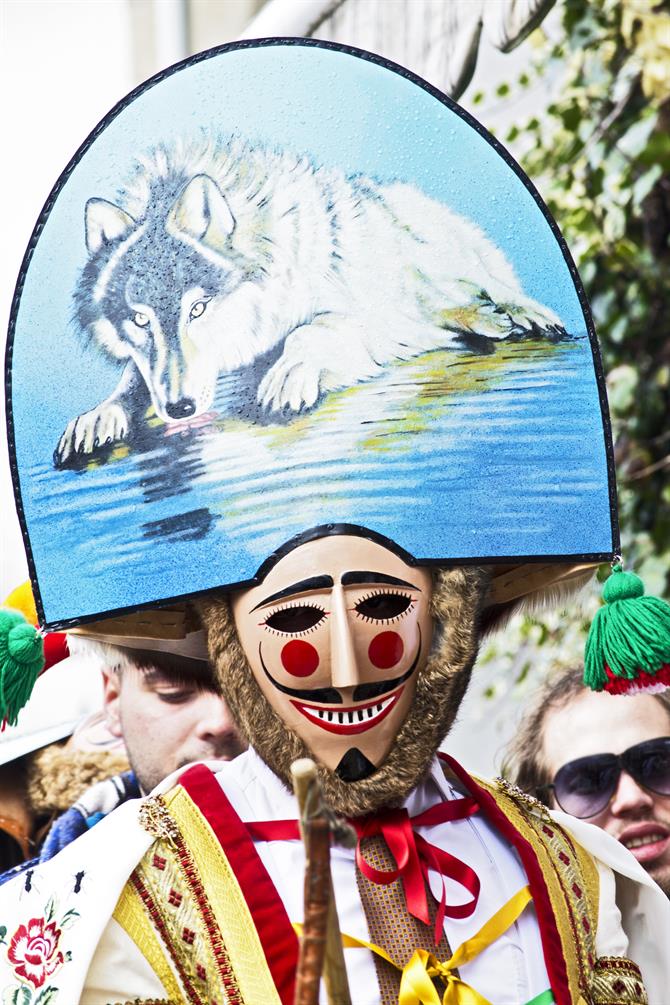
The Laza carnival
The Laza carnival is considered to be the oldest in the world. The kings of the carnival are the peliqueiros, whose exquisite (and heavy) clothing - weighing almost 20 kilos - consists of a tall headdress with pompoms, a mask, short jacket, white shirt and scarf, tie, belt, laced shorts with tassels, red stockings, garters and ornamented pants.
The noisy first appearance of these unique carnival characters occurs during the Sunday morning of carnival when all 150 of them congregate in the so-called Estrea do Peliqueiro.
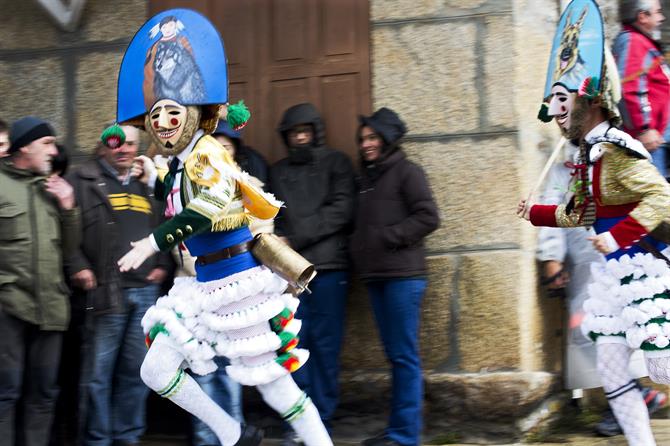
Large cowbells tied to their waists (each cowbell weighing a kilo and a half) sound their arrival, imitating the sound of thunder announcing the coming of a storm. The peliqueiros run, jump and wave their whips, whips that they will not hesitate to use against anyone who dares to stand in their way - you cannot touch them either, so tradition dictates.
However, the Laza carnival begins long before the peliqueiros enter the scene. During the four Viernes de Folión a lively festival is formed to include the processions that pass throughout the town at night with an accompaniment of drums and thunderous objects of all kinds.
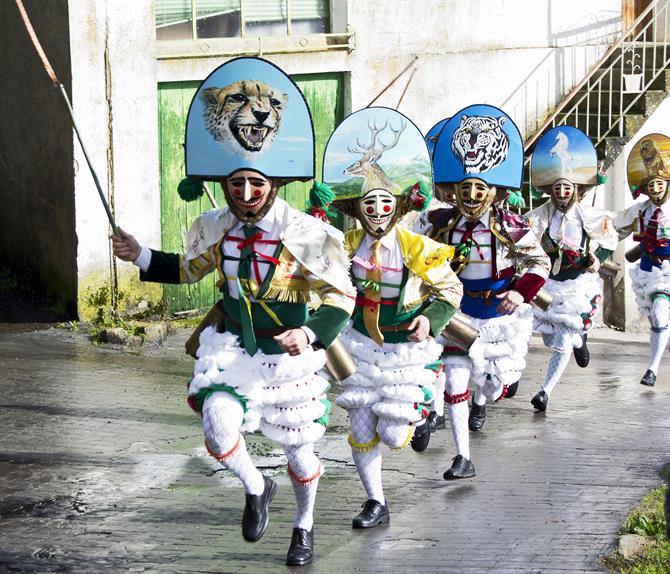
If there is a party before the outbreak of the peliqueiros, you can also expect one later on too. Make sure to take notice of the mariners too: a lot remains of the Laza carnival to enjoy! Lunes Borralleiro is one of those times, and a most anticipated day by locals and visitors alike.
In the morning, the Farrapada takes place; this bloodless battle is somewhat sticky but definitely fun - the only weapons here are muddy rags. Be careful because you too can easily end up covered in mud.
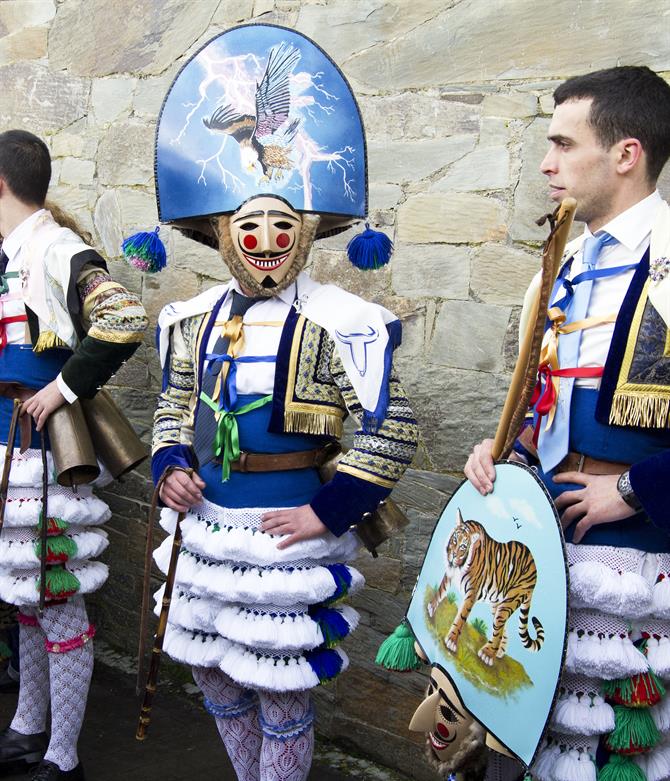
The best comes along in the afternoon, with the highlight being the Bajada de la Morena, a truly crazy time, not for the faint of heart - the peliqueiros this time share the spotlight with a character with a bull's head and big horns, all the while kilos of flour, gorse and ants previously provoked using vinegar are thrown. How could you miss something like this?
The fun culminates in a collective joy representing one of the most spectacular moments of the Laza carnival.
Xinzo de Limia, Verin and Cobres
The Xinzo carnival is said to be the longest carnival in Europe. This is probably true, as there are five weekends of events and celebrations dedicated to it every year. The first of them corresponds to Domingo Fareleiro, which again sees the flying flour as a unifying element of the fun.
In Verin, the largest carnival week starts with Jueves de Comadres, the women's big event - an important time for the men who are dressed as women as well. On Tuesday another massive event takes place: the big parade of floats and cigarrones.
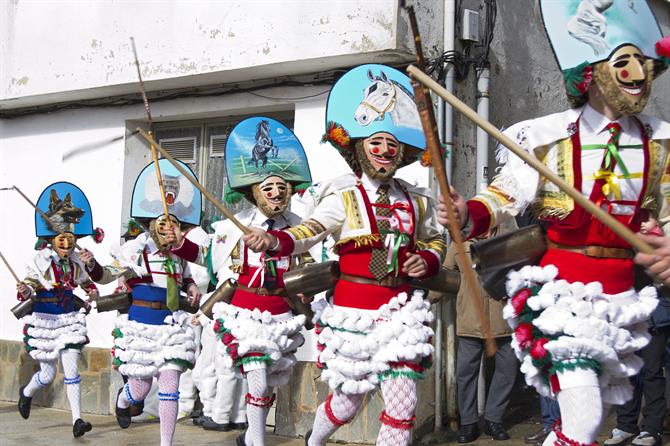
En Cobres (Vilaboa, in the province of Pontevedra) also takes place on Martes de Carnaval, the most important day of this carnival, which also happens to be the most elegant of all Galicia.
Even with all these options, the party continues on not only throughout the eight official touristic carnival attractions, but in almost 200 towns throughout Galicia. Looking forward to your trip yet?
Gastronomy
It is near impossible to speak about the carnival without mentioning the gastronomy that comes along with it. Carnival celebrations in Galicia cannot be fully appreciated without trying out the delicious specialties of the area. In Viana do Bolo, while the carnival is being celebrated, Fiesta de la Androlla is also celebrating the sausage that is typical to the area.
Stew is undoubtedly the undisputed protagonist during the carnival period. A cooked ham leads the way, with meat (usually beef), chicken, sausage (onion and meat), turnip (or other kinds of vegetables), potatoes, ribs, bacon, chickpeas, and Galician pork's head.
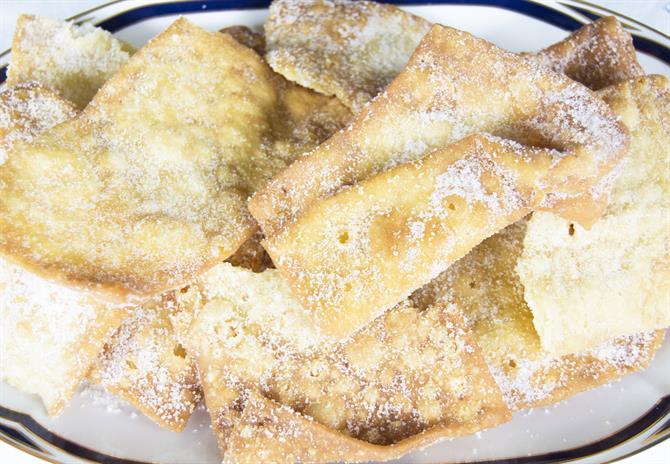
As for turnips, which are in season by the time when the carnival is being held, these are considered without any exaggeration to be Galicia's national vegetable.
Desserts also deserve a special mention at the carnival. Among the most popular are pancakes and orejas; the latter are made mainly of flour, eggs, butter and sometimes star anise. And yes, they are very rich.
